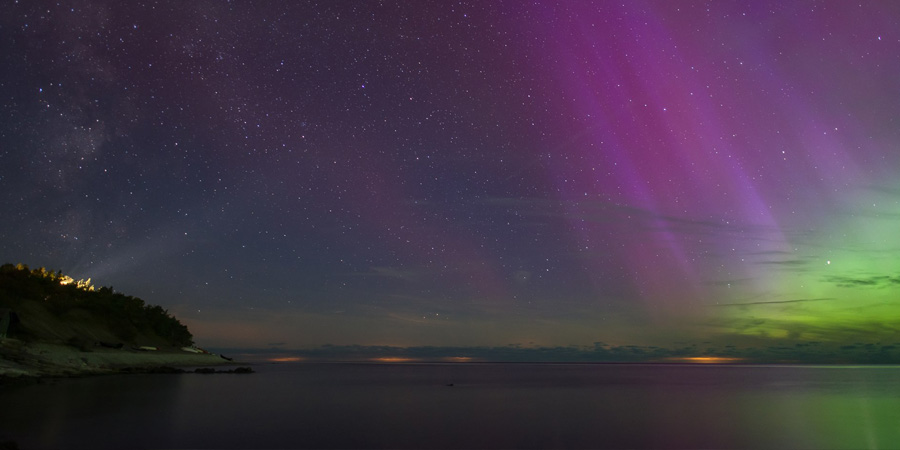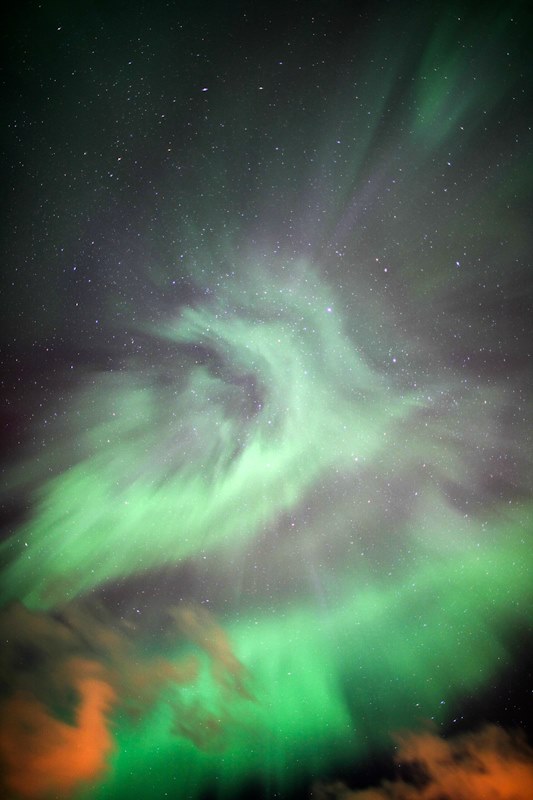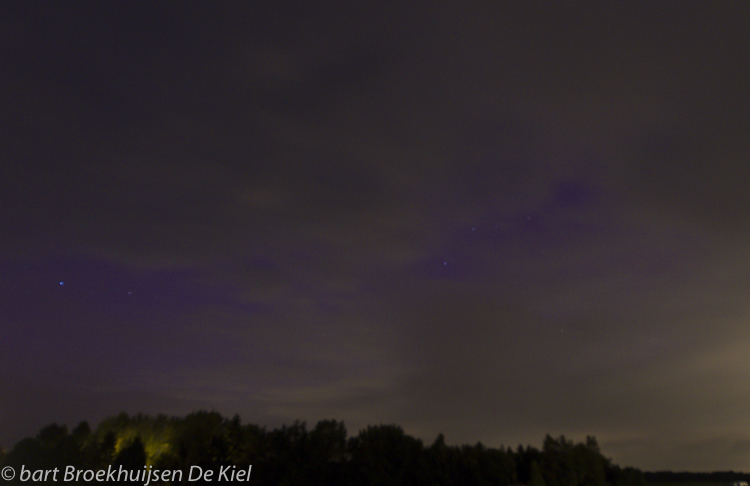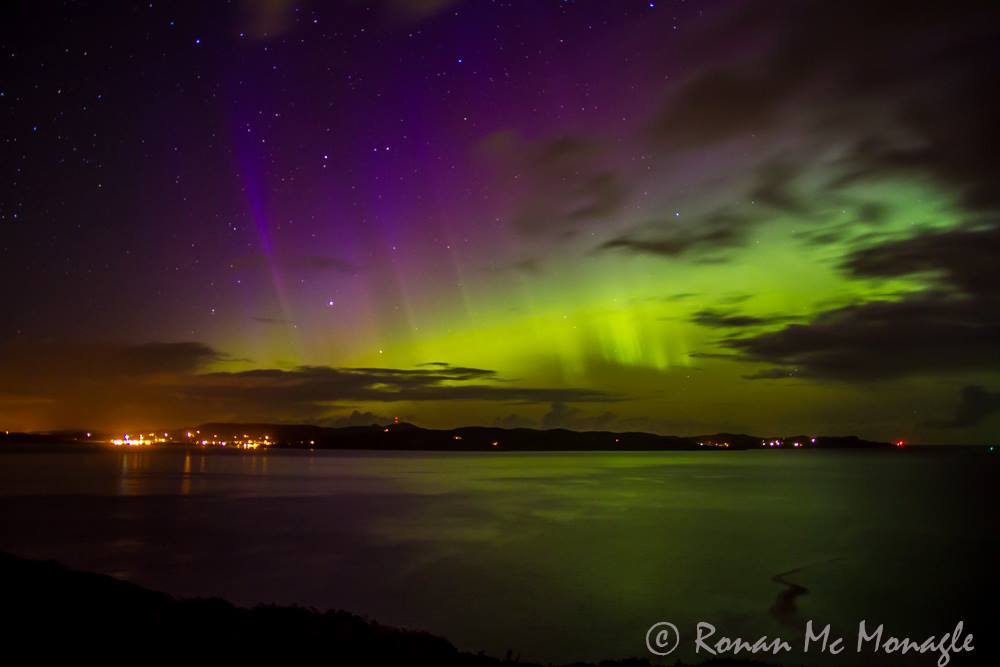Strong G3 geomagnetic storm
Wednesday, 7 October 2015 23:29 UTC

The anticipated coronal hole high speed solar wind stream sure delivered and sparked a strong G3 geomagnetic storm. Aurora displays were reported from northern Poland, northern Germany and even the Netherlands had some photographic aurora!
The direction of the IMF (Bz) went as low as -20nT during the afternoon and quickly sparked a moderate G2 geomagnetic storm. The strong G3 geomagnetic storming threshold was reached during the European evening hours.
Header image: Aurora Borealis captured just a few hours ago by Carl Bergstand (Gotland, Sweden)

Image: Kristian Potsepp (Estonia)

Image: Bart Broekhuijsen (The Netherlands)

Image: Ronan Mc Monagle (Donegal, Ireland)
What to expect in the coming hours
We expect these enhanced geomagnetic conditions to persist in the coming hours. The total strength of the IMF (Bt) decreased significantly to 7nT but the solar wind speed increase to 750km/s which is high. Minor G1 geomagnetic storming conditions remain likely in the coming hours. The upper United States and of course Canada should be alert for aurora in the coming hours. Sky watchers in Quebec already report visual aurora.
False G5 geomagnetic storm alert
On our website and Twitter you might have noticed that the observed Kp-index showed 9 for a while. We believe this is an error as all the magnetometer data, auroral observations as well as NOAA itself reported at most strong G3 geomagnetic storming conditions.
Our data comes from NOAA's Wing-Kp index which uses magnetometer data from the USAF and it is normally a very reliable source. We are glad that we can use this data but this issue is unfortunately beyond our control. We apologize for any inconvience.
Thank you for reading this article! Did you have any trouble with the technical terms used in this article? Our help section is the place to be where you can find in-depth articles, a FAQ and a list with common abbreviations. Still puzzled? Just post on our forum where we will help you the best we can!
Latest news
Latest forum messages
Support SpaceWeatherLive.com!
A lot of people come to SpaceWeatherLive to follow the Solar activity or if there is a chance to see the aurora, but with more traffic comes higher costs to keep the servers online. If you like SpaceWeatherLive and want to support the project you can choose a subscription for an ad-free site or consider a donation. With your help we can keep SpaceWeatherLive online!
Space weather facts
| Last X-flare | 2025/12/08 | X1.1 |
| Last M-flare | 2025/12/20 | M1.0 |
| Last geomagnetic storm | 2025/12/12 | Kp5 (G1) |
| Spotless days | |
|---|---|
| Last spotless day | 2022/06/08 |
| Monthly mean Sunspot Number | |
|---|---|
| November 2025 | 91.8 -22.8 |
| December 2025 | 118.5 +26.7 |
| Last 30 days | 108.7 +20.4 |





